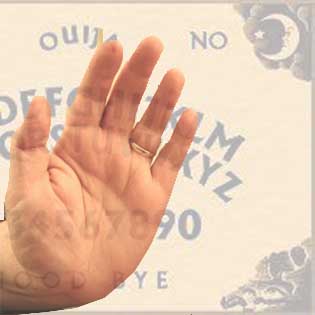 I can’t exactly remember when the chills first started. When I was in summer camp when five or six, I remember concentrating on placing my right hand over my left side to be able to say the Pledge of Allegiance. I then felt chills, vibrations up my back, because I was feeling part of something I did not understand but I knew was good, something larger than myself.
I can’t exactly remember when the chills first started. When I was in summer camp when five or six, I remember concentrating on placing my right hand over my left side to be able to say the Pledge of Allegiance. I then felt chills, vibrations up my back, because I was feeling part of something I did not understand but I knew was good, something larger than myself.
Over time the chills or vibrations would come and go. The feeling always accompanied the experience that I’d been moved. From what I can tell, this is universal.
In 1980 and 1981, I went through a Neuro-Linguistic Programming (NLP) trainers program to become a practitioner of NLP. I was fascinated by the communications model. Fifty-eight psychotherapists, psychoanalysts and psychologists, one businessman and I went through the training. The focus was on addressing and achieving patients’ psychological goals. There was a secondary emphasis concentrating on communicating directly with another person’s unconscious.
The work of Milton H. Erickson was integral to NLP insights. Erickson was a hypnotherapist who developed a number of new techniques, wrote books describing those techniques and taught many therapists how to use hypnotherapy to advance patient goals. Erickson died in 1980.
Over the course of the training we developed a sensitivity to the unique ways an individual’s unconscious signals “yes” or “no” to the inquiries of the therapist or person communicating with that patient’s or client’s unconscious. Sometimes it is the classic lifting of a hand to signal yes. Sometimes it is an obvious head nod. This has been called an ideomotor effect.
I discovered over the course of the training that if I asked questions of my own unconscious, my unconscious would signal “yes” by offering chills up my back, and “no” was signaled by no chills.
Placing myself in a trance was easy. I’d been meditating for almost ten years. My unconscious felt trusting enough of my conscious to communicate clear responses to my inquiries, as long as what I was asking was in my best interest and was personal.
From around 1980 to 1984, I studied NLP and hypnotherapy with a passion and dedication that was, for me, unusually intense. I was interested primarily in learning about my self and the structure and processes characteristic of the human unconscious. At the time, I was painting watercolor metaphors for states of mind and publishing those paintings as greeting cards. I read everything the NLP authors had published, some books several times. I immersed myself in tapes of lectures. I explored the books of hypnotherapists and therapists cited by the model. I attended workshops.
Conversations with my unconscious continued. I would fairly frequently experience affirmation shivers up my spine when I had a thought that my unconscious wanted me to pay particularly close attention to. I found myself adjusting my behavior according to the direct messages that I would receive from my unconscious. Over time, a “no” signal emerged that I could read. Instead of a shiver signaling “yes,” the “no” would be signaled by a feeling not unlike an elevator about to go down, a sort of pause, difficult to describe.
Almost always I paid close attention to the signals, but often I would not let myself relax enough to make it possible for the communications to occur. They didn’t just break through at any time. I had to be listening. Listening involved letting my mind clear and being relaxed. Months at a time I noticed no communication.
Sometimes, driving from one place to another, talking to myself, the chills would shiver their way up my spine. I would then revisit the thought, realizing that the specific words I had been saying had been singled out as significant by the part of me that wants for me only the very best.
The signals from my unconscious offer me an experience of feeling accompanied and feeling loved. When I feel the guiding suggestions, I feel loved by something greater and wiser than my isolated, conscious self.
Over the years, there has been an integration of my unconscious and conscious, resulting in my often not even noticing that I’m receiving these communications. My conscious unconsciously adjusts to the communications from my unconscious. Often, there is a certain seamless way I go about my life, guided by an unconscious that I feel loved by. I feel accompanied. Not all the time. I indulge in the experience that I am insecure. But, a lot of the time I am in silent communication with a part of me whose boundaries are not clear to me, but I suspect this part of me crosses lines to experience an identity outside the confines of my body.
One of the unique aspects of this experience is that over time I simply have fewer questions to ask myself. I just trust that things will be OK and that I am behaving in my own best interest. Over the course of my life I have shifted identity from that which I used to define as conscious to that which is both unconscious and conscious. A result of this shift in identity is what you see emerging in my writing, a dancing through a number of disciplines guided by a playful unconscious. My unconscious seeks that I experience union. These postings and the postings here are the evidence of that guided dance.
…
Proceed to author’s FREE book download on this subject (The book is called Evolution, Autism and Social Change). 10 minute introductory video here.
Andrew Lehman on 08/28/09 in The Unconscious | No Comments | Read More

